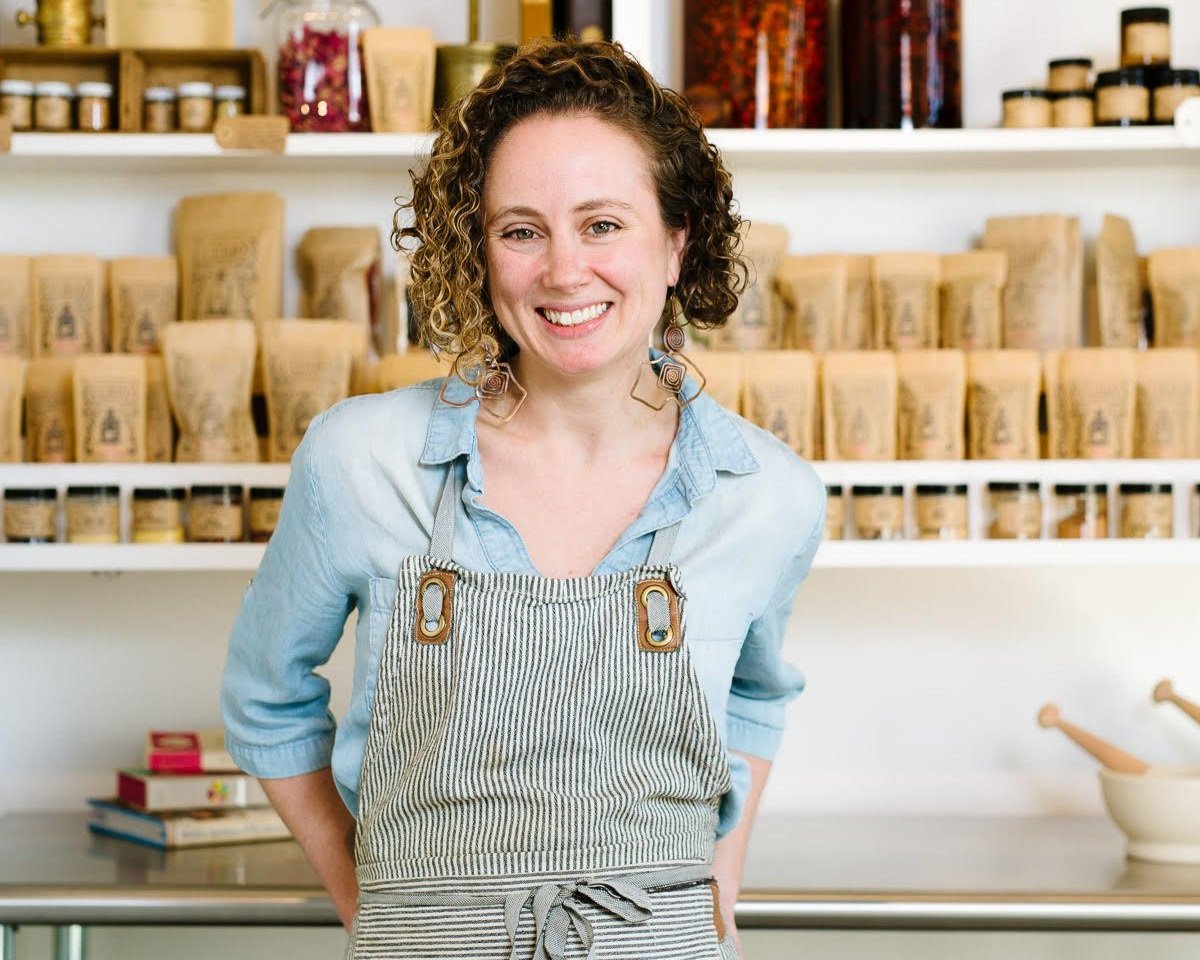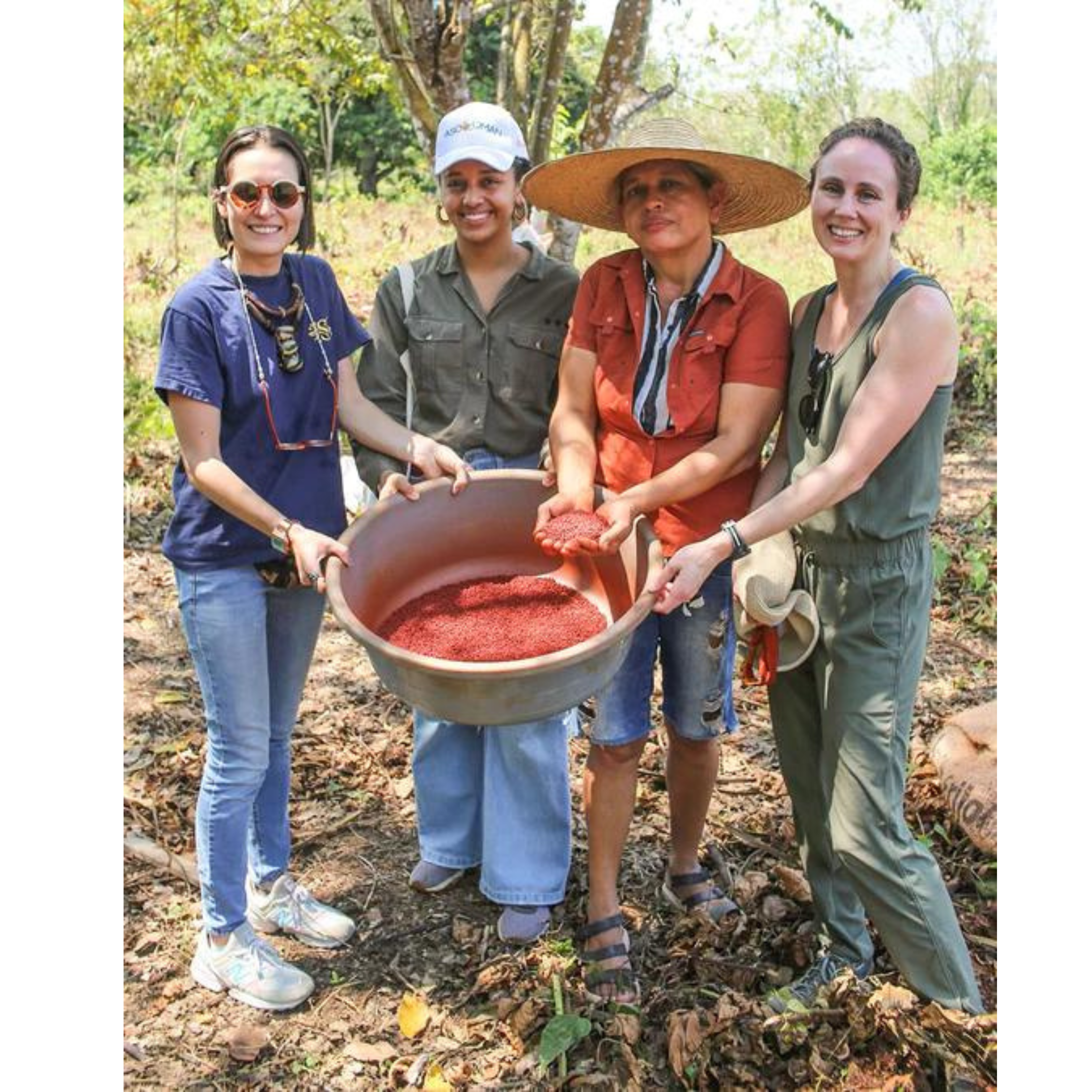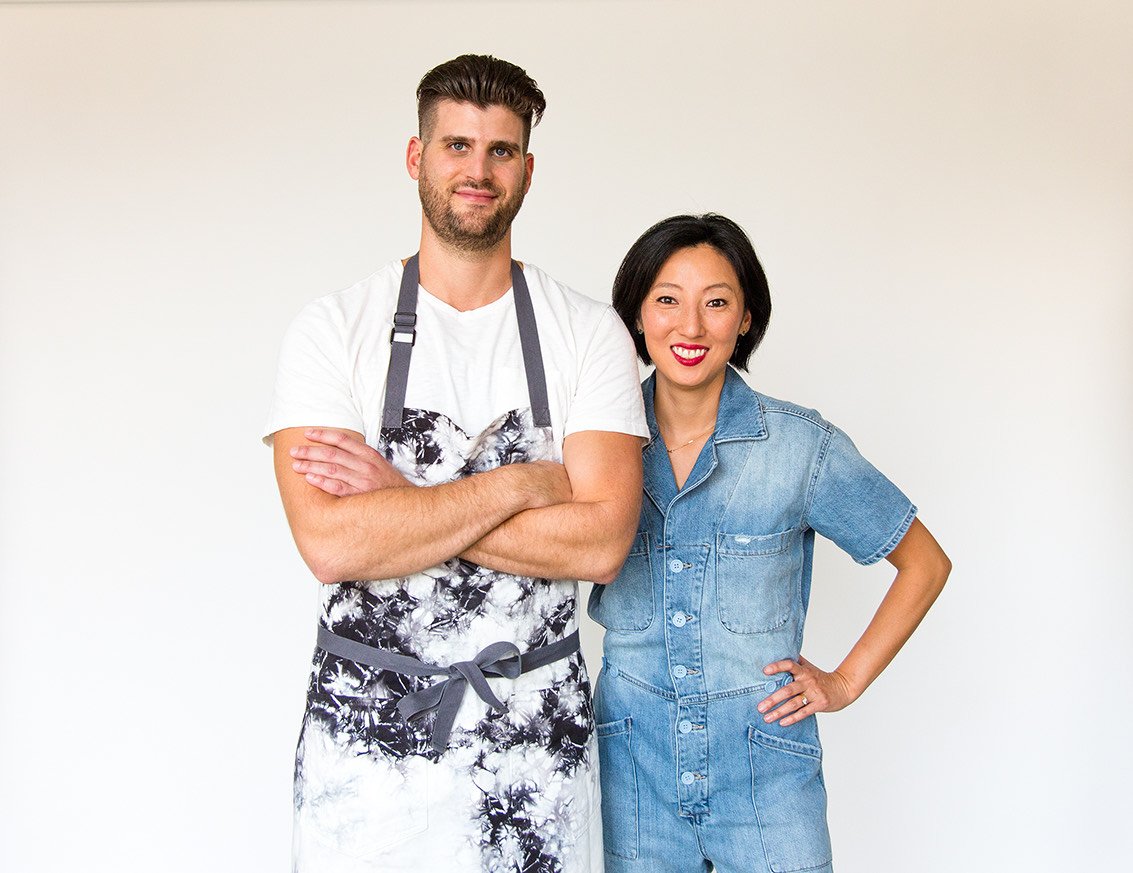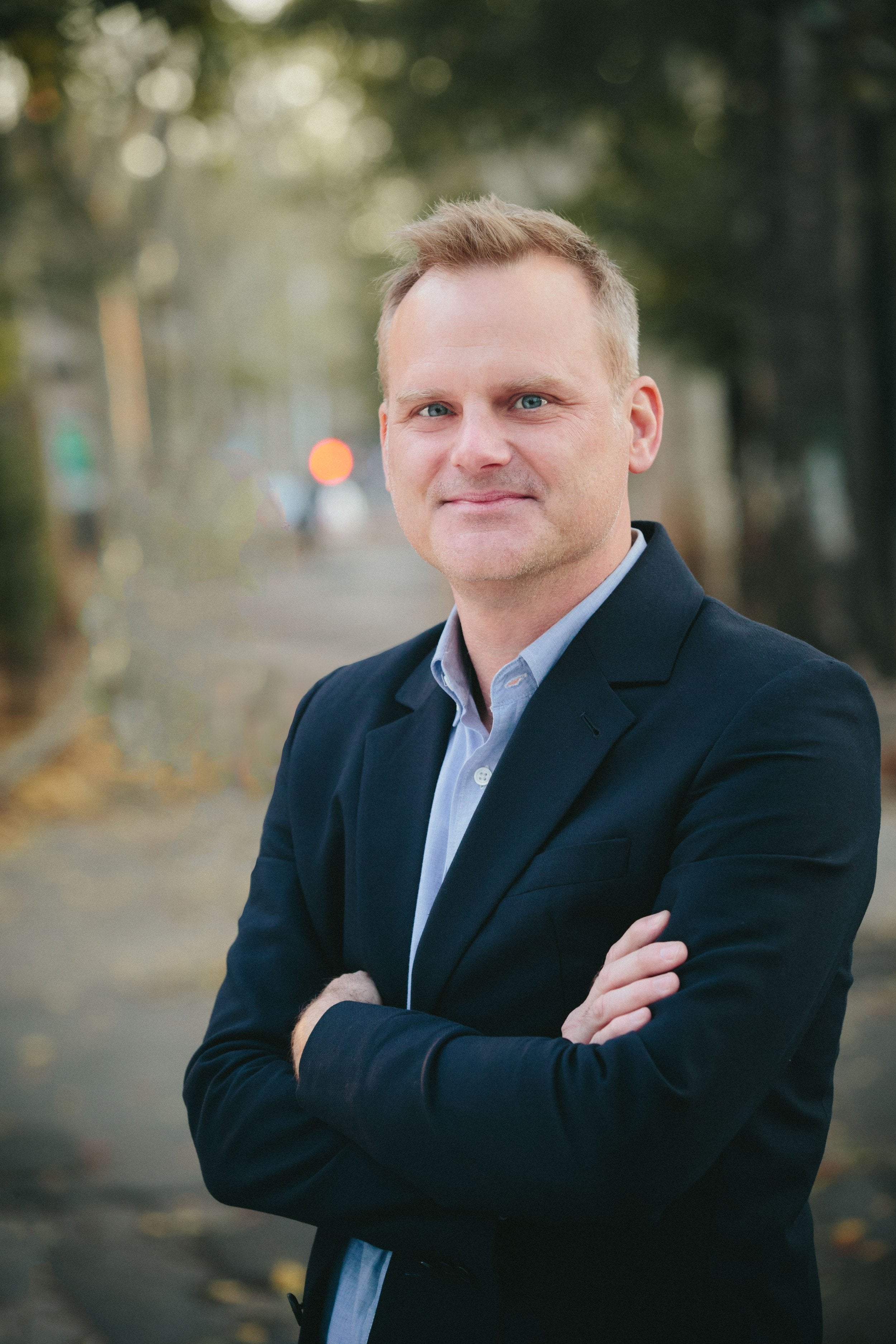Getting Spicy with Claire Cheney
In conversation with Claire Cheney of Curio Spice Co.
As a student at Oberlin College, Claire Cheney came across an ancient fresco that depicted a woman harvesting saffron and offering it to a goddess seated on a pile of pillows. She had been doing research for a poetry project and was immediately struck by the 5,500-year-old mural. The artwork inspired her to study humanity’s relationship with spices, travel to Greece to learn about saffron, and even volunteer on a modern day saffron farm.
Almost 15 years later, Claire’s mission-driven spice company Curio Spice Co. sources its saffron from the very same farm. It’s a full-circle moment for the Cambridge, Massachusetts-based entrepreneur, who worked in the specialty coffee and single-origin chocolate industries before dedicating her career to her love of spices.
“Through coffee and chocolate, I learned about the model of sourcing from origin to highlight terroir and also to disrupt commodities supply chains—and I noticed no one was doing that in spices,” Claire explains. “The realization that there was an untapped niche of directly-sourced spices, combined with my curiosity about saffron, was how I got the idea to start Curio Spice.”
Curio Spice Co. is now renowned for its collection of artisanal spice blends, all of which Claire designs herself. She and her team work directly with small farmers all over the world to source the spices before they grind, mix, and pack them in-house. They offer single-origin spices, as well. Here, Claire shares more about the development of her company, its strong mission, and what she envisions for its future.

Claire Cheney, founder of Curio Spice Co.
Mast Journal: How did you go from sourcing saffron to building a whole spice company?
Claire Cheney: From my original saffron journey, which became the north star for Curio, I discovered that there's pretty interesting food culture here in the U.S. And I wanted to not only tell people interesting stories about spices, but make them more accessible, so I focused on blending spices. Our spice blends are what differentiates us in the market, in addition to the single-origin mission-driven aspects of the company. But our spice blends are meant to capture a sense of place and evoke an experience. We now have 10 signature blends, which are original. They're not interpretations of previously-made spice blends. They're just complete inventions based on where I've sourced the spices and what ingredients I'm interested in celebrating.
MJ: That's awesome. And how did you learn to blend spices?
CC: I noticed when I worked in coffee that I had an affinity for distinguishing subtle flavor differences. I actually competed as a professional barista in some of the regional and national barista championships. To do that involves totally geeking out about flavor and intricacies of terroir. That was my gateway into understanding my own skill set, but also that it was really fun and satisfying.
And you can't really go to school for spice blending, per se, so I just continued my journey in the food industry. I ended up working at a restaurant here in the Boston area called Oleana, which is run by Anna Sortun. I had actually interviewed her during my saffron project because she has a cookbook called Spice. So it was cool that it came full circle and I was able to work under her guidance. I did a lot of the spice blending for that restaurant and the sister restaurant Sofra. And then I realized I could do this full time.
MJ: That’s such a fun trajectory.
CC: Totally. No little kid is like, I want to be a spice blender when I grow up. But it's a cool vocation and certainly surprises my friends and family members. It's one of the obscure options that everyone should consider.
MJ: Definitely! Did you always want to be an entrepreneur? Or did the mission entice you to start your own company?
CC: Definitely the mission. I did not foresee myself as an entrepreneur at all. I'm sort of a reluctant business woman. I would say the career path I had envisioned myself was more of an artist writer. But, as you can imagine, that takes a lot of skill and time and overcoming great discouragement to succeed financially. Instead, I put my writing skills to use in a business context and I use the opportunity of direct source spicing and the mission of the company to tell stories. A lot of my writing gets put to use in that way, which is pretty great.
MJ: Can you talk a little more about the values behind your company?
CC: Our mission is twofold. The first part of our mission is to improve the livelihoods of spice farmers by sourcing directly from origin and disrupting commodity supply chains, which are inherently exploitative to the farmer. The second part of our mission is to inspire culinary creativity, especially with our spice blends.
The first part of our mission, which has to do with ethics and social responsibility, is what guides a lot of our decision making. That is because we're a woman-owned business. I own a hundred percent of the business, so it's really important for me to model that on an international scale. Sourcing from women-owned businesses is really important to us. We want to highlight that in our work because businesses owned by women, on an international scale, are not the norm. Highlighting that focus on gender equality is incredibly important.
We’re also focused on sourcing organically—obviously getting chemicals out of our food system is pretty important—and social responsibility. We make sure that we source from farms that are paying their workers fairly, above minimum wage, and that offer professional development.
After Russia invaded Ukraine and there was a lot of economic disruption for many countries, Sri Lanka was particularly affected. Our farmers there couldn't afford simple things like rice and fuel. So I reached out and asked what we could do to help. And they were really surprised and grateful. We ended up raising money and donating about $8,000 that they distributed by buying food and fuel. It was cool to be able to have that kind of direct impact on one of our partners.
MJ: That’s so incredible. Do you travel to visit your partners around the world?
CC: I do. It’s become a little harder now that I'm a mom. I have two little kids, so it's been a new challenge for me. But my older daughter has actually been on several of those sourcing trips. She’s crawled under a cardamon bush in Bonga, Ethiopia and she's eaten fresh ginger from the ground in Costa Rica. And then just this past February, I brought both girls to Columbia where we're starting a new sourcing relationship. And that was really fun.
MJ: That's super cool. And that is not an experience that most children get.
CC: No. And interestingly, some people ask, Oh, how is that? Is it hard? I mean, of course it's hard. Traveling is always kind of hard, but it's such a cool way to interact with our farm partners because there's this universality to being a parent. Even if I can't speak the same language—in a lot of the places we're going to, they speak certain dialects that I can't really communicate with very easily—just being there with my kids connects us immediately and forms this mutual respect. And that's a really cool aspect of it.

Photography courtesy of Curio Spice Co.
MJ: Totally. And how did you choose the name and aesthetic of the company?
CC: I'm glad you asked. I love talking about the brand. The name Curio Spice Co. comes from the concept of a curiosity cabinet, which is a Victorian-era concept of collecting curiosities from the natural world and displaying them in your home as a mini natural history museum. When I first started setting up the company, I thought of it as collecting these wonders from all around the world and sharing them with my community. It felt like a curiosity cabinet that you could eat.
It's also the concept of just being curious. In the food world, having a sense of curiosity is such a great way to navigate the cuisines of the world and to learn about cultures and histories through a culinary lens. Our logo is an old apothecary bottle within which there are enchanted objects. And the bear in the middle of the jar is there because bears have the best sense of smell in the animal kingdom.
MJ: That's why you have to put your food in a bear box when you're camping.
CC: Exactly. They're nuts. They can smell food from a hundred miles away or something insane. I like to think we can be inspired by their keen sense of smell. Because it's somewhat ignored sometimes.
MJ: If bears could talk, just imagine what spices they would blend together.
CC: That’s a good point.
MJ: Can you share more about Curio Spice Co.’s sustainability efforts?
CC: Definitely. From the founding, I knew I wanted to create a business that made a positive impact in the world. I didn't just want to make a profit and extract value from the world without giving back. So from the get-go, I wanted to actually pursue being a benefit corporation and a certified B Corp, whose tagline is using business as a force for good. The idea is having a nonprofit-type mission, but in a for-profit model. And sustainability is a huge part of that. I was actually an environmental studies major in college and was very interested in food systems and sustainability. So it seemed only logical that I create a business that is environmentally responsible.
Sustainability is complex in the spice trade for sure. Spices are coming over long distances. There's a lot of carbon emissions involved. But that being said, there's a lot that we do to reduce that. We source our packaging for the signature blend line from a company based in Pennsylvania. Most packaging options available to us otherwise come from China, so that's significant. And it's cool to also just work with a somewhat local company.
We also put a focus on sourcing spices locally. People don't think of New England or the East Coast of the U.S. as a spice destination, but we actually have successfully sourced a large volume of ingredients, including seaweeds, mushrooms, various types of herbs, a lot of sea salt even, from this region. We work with a local farm that grows ginger and turmeric and another farm that grows chilies here in Massachusetts. We're just always hunting for cool flavors that are really close by.
MJ: Who knew!
CC: The spices here are sort of hidden, but there's actually a great depth of flavor. One of our signature blends is called Supeq, and that is a native American word for ocean. That blend is one hundred percent sourced from New England. It's meant to capture the flavors of the region and also be your environmentally-friendly spice mix to offset all the other ones that are coming from Sri Lanka and Africa and Southeast Asia. Although we do emphasize our transportation choices. A lot of companies don't mention this, but we use ocean freight over air freight, which has a lower carbon footprint.
MJ: Awesome. And where can people find your spices and blends?
CC: We have a brick-and-mortar in Cambridge, Massachusetts, not far from Harvard University, and that is our jewel box of a storefront. It's quite the curiosity cabinet. And then we also have a lot of wonderful retail partners, such as Mast Market. We’re at some Whole Foods locations, too. And then we also do direct-to-consumer sales through our website.
MJ: Do you do events at your shop?
CC: A year ago, we launched a dedicated classroom. It's called the Lab at Curio and we teach about the art and science of spices and food. We do ticketed events there. There’s a spice blending class, where I teach my own theory of layering flavor and how to make your own spice mixes. We also have guest teachers who come in and teach about different regional cuisines. We host entrepreneurs who are trying to get their food business off the ground and also do a food writing group.
MJ: That sounds so fun. Do you find that there's a community around the shop? Do you see the same people coming to all your events?
CC: For sure. It's been a really wonderful and heartwarming response after the pandemic, which was so void of all that in-person communal learning. We pivoted to do virtual stuff during the pandemic, but particularly for something as sensory as spices, it's been really important to return to that in person. And having our community just come out of the woodwork and support us is so meaningful.
MJ: Of course! That’s super special. Do those same people have a subscription to Curio Spice Co.?
CC: Oh yeah. We have our Secret Spice Society, which is fun. The subscription has been a cool product that we've developed over the years. It’s been an exciting way to engage customers with our recipes because sometimes you get a spice and you're like, What the heck do I do with this? I've never used it before. It smells weird. So we have one in-house recipe developer and then also a contracted recipe developer, and they're always pulling out amazing, amazing creations that inspire people to cook with our spices and access these really unusual flavors at home. A big part of that is through the Secret Spice Society, but we also put some free recipes on our website for folks.
MJ: That's fantastic. And is there anything coming up for Curio Spice Co. that you're really excited about?
CC: I’m working on new sourcing relationships across the planet. I am continuously researching ways to improve our positive environmental impact and our B Corp score. It's quite arduous. There's a very long assessment with many points. I'm also working on the concept for a Curio Spice Co. book.
MJ: Congratulations! Finally, what’s your favorite spice blend? And what do you like to make with it?
CC: Oh man, that's like choosing my favorite baby. It's hard to say. This summer, my favorite blend is Bonga Spice, which is our Ethiopian green chile rub. I like to just do a simple grilled chicken with it. I use it like a dry rub on bone-in chicken and let it dry out a little. So then it gets crispy when you grill it and it's really easy and super flavorful.
More from The Journal

Alisha and David Make Your Pasta
Alisha Bennett, co-founder of Your Pasta, tells us about the juggling act of starting a new business and their delicious commitment to local and organic food.
Read more
In conversation with Colin Brice, architect and co-founder of Mapos. Colin reminisces on designing Mast’s Mt. Kisco space, his creative path, his human centered approach, and what is next.
Read more